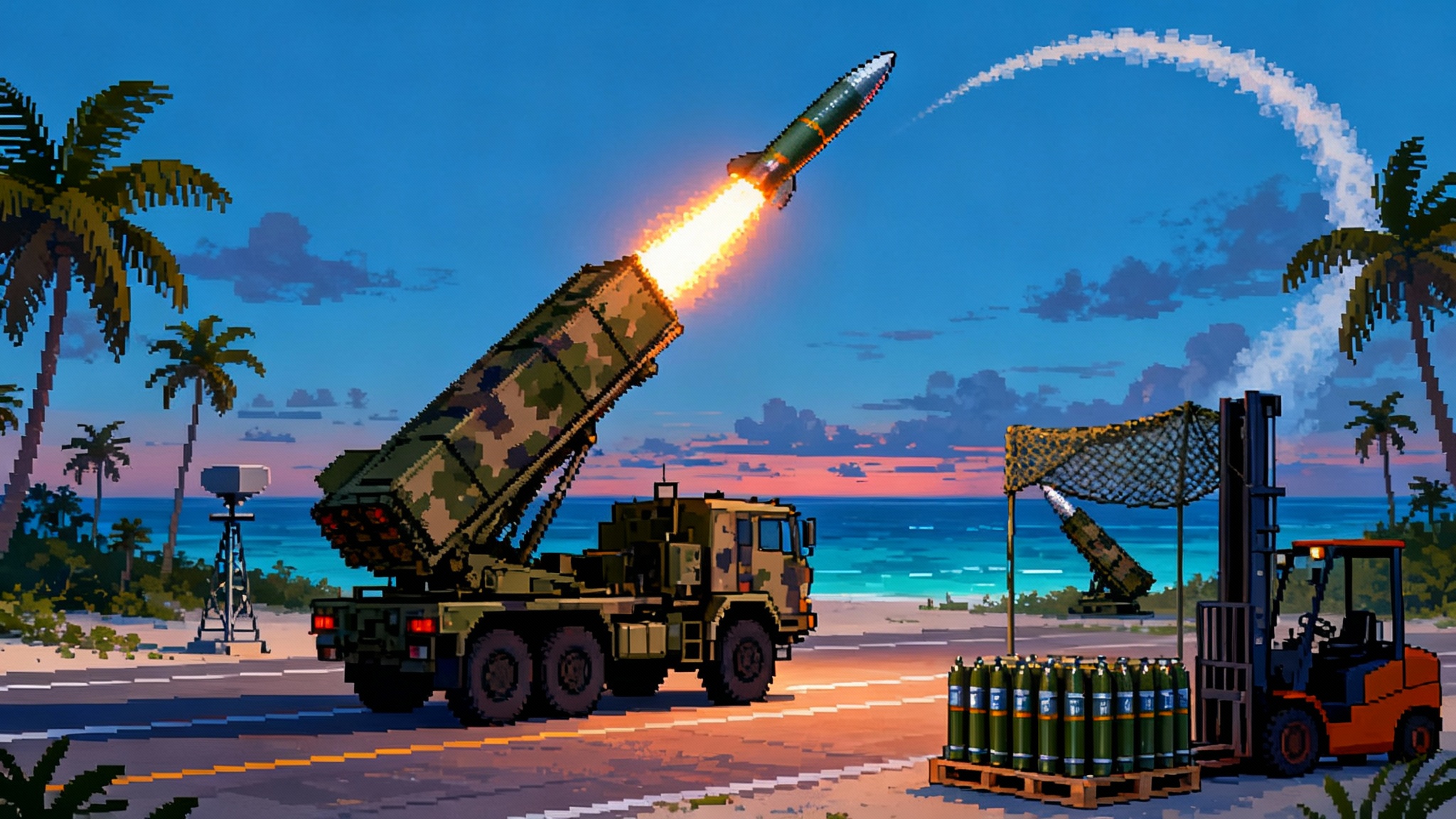XM30 trials: open architecture meets the AI and drone battlefield
With Milestone B cleared in June 2025 and first prototypes due in 2026, the XM30 is arriving as a digital-first infantry fighting vehicle built for drones, electronic warfare, and rapid upgrades. Here is how its design will rewrite tactics and sustainment.

The Army’s next infantry carrier is being wired for a different war
The XM30 program crossed its big go‑build decision in June 2025, then moved from digital design into fabrication as General Dynamics Land Systems and American Rheinmetall Vehicles began cutting metal for prototype vehicles. The Army plans to test those prototypes in 2026 before a downselect in fiscal year 2027, replacing the Bradley through the late 2020s. The road to this moment started with new contracting awards in 2023 that formally redesignated the Optionally Manned Fighting Vehicle as the XM30 and locked in two competing teams for the prototype phase. Those dates matter because they set expectations for when soldiers will start touching real vehicles at scale and how quickly lessons from Ukraine and the Middle East will be baked into the design. For the record, the Army publicly confirmed the two‑vendor prototype plan and the redesignation in June 2023, and it has reiterated the low‑rate production window in the 2027 to 2028 period in fiscal documents and public updates, a cadence that matches recent communications from the program office. See the Army’s contract announcement for the two‑team prototype build for context on how we got here, and why the service emphasized speed through competition and digital engineering in this phase Army announces contract awards and redesignation.
If you are expecting a bigger gun or thicker armor to be the headline, you will not be disappointed. The 50 millimeter cannon, third‑generation sensors, layered protection and optional anti‑tank missiles are a jump over the Bradley’s baseline. The real breakthrough, though, is not a visible piece of steel. It is the invisible digital backbone that connects the XM30’s power, sensors, radios, fire control, active protection and unmanned teammates. That backbone allows the vehicle to act like an upgradable smartphone hub on tracks rather than a bespoke machine that needs years of surgery for every new capability.
A digital backbone that behaves like a power strip and a switchboard
The Army is building the XM30 around an open architecture, meaning government‑owned interface standards rather than one‑off wiring and proprietary software. Think of it as two simple household items fused inside a combat vehicle:
- A power strip, so that the vehicle can feed many different accessories without rewiring the room.
- A telephone switchboard, so that those accessories can share data and be controlled through one set of menus.
In Army terms, that power strip and switchboard show up as standards like VICTORY for on‑the‑vehicle networking and the C5ISR and electronic warfare card ecosystem known as CMOSS and CMFF. Instead of carving out space for a unique radio rack, a separate electronic warfare box and a standalone navigation receiver, engineers install a shared chassis and slide in cards that handle positioning and timing, waveforms, jamming and compute. That reduces size, weight and power penalties, and it cuts integration timelines from years to months because a new function is a card swap and a software load, not a redesign. This emphasis on modular spectrum tools echoes how units are pushing TLS‑BCT spectrum power to the platoon.
To see how this matters in practice, imagine a brigade that learns from combat footage that a new drone threat operates on a different frequency and uses a new mode. Under a closed architecture, each vehicle would need a custom kit, additional cables, a new display and weeks in a depot. Under the XM30’s open approach, the Army can field a new CMOSS‑compliant card, push a software manifest and let units plug in the new capability during a maintenance window. This is not a theory piece. The Army has stood up a formal program of record for the CMOSS Mounted Form Factor chassis and cards, and it has been explicit that the goal is plug‑and‑play inside ground and aviation platforms Army formalizes CMFF plug‑and‑play chassis.
Modular payload bays and armor that works like Lego for lethality and survivability
Open architecture does not stop at electronics. The XM30’s exterior is designed for modularity as well. Vendors have shown interchangeable armor tiles, standoff roof protection and door or sponson volumes that can host different payloads. One set might carry a soft‑kill jammer that throws off incoming missiles. Another could mount a bank of small hard‑kill interceptors to defeat rockets or drones. The key is that the structural hardpoints and the digital control pathways are standardized, so adding a new layer does not demand a rebuild of the turret or hull.
Active protection is no longer optional. Hard‑kill systems that sense and intercept incoming rounds took years to leave the lab and prove on real vehicles. The XM30 is being engineered so that such systems are part of the base design rather than bolt‑ons that fight for space and electrical power. That shift has tactical consequences. An infantry platoon can accept more risk crossing a danger area if each carrier has both soft‑kill and hard‑kill defenses, and it can deliberately bait an enemy anti‑tank team to fire if the vehicle’s crew is confident in the intercept geometry. The hard requirement is a fused picture of threats. Radars and infrared sensors must be stitched into the vehicle’s perception stack, and the fire control computer needs to prioritize which countermeasure fires first to prevent fratricide of friendly drones and dismounts.
The same mounts that take an interceptor today can host a low‑cost drone launcher tomorrow, or the housing for a tethered micro‑unmanned aircraft system that gives a persistent overhead view without risking a flyaway. That is how modular payload bays accelerate innovation. They hedge both the threat and the pace of technology without pre‑judging the exact gadget the Army will need in 2028.
Organic teaming with unmanned air and ground systems
Mechanized units already carry small drones in rucksacks. The XM30 pushes that practice inside the vehicle’s nervous system. Expect three patterns to become routine in training and operations:
- Tethered eye in the sky. A mast or a tethered quadcopter deploys from the hull to maintain a perch at 100 to 200 feet. It draws power from the vehicle, which means hours of surveillance and no batteries to swap. It also sinks video and target tracks directly into the vehicle network, so the gunner sees what the drone sees without juggling tablets.
- Loitering munitions as the fourth missile. In addition to anti‑tank missiles, crews can employ a vehicle‑launched loitering munition against targets that are out of sight or behind cover. The vehicle provides communications relay, mission planning and electromagnetic deconfliction through its unified network stack. That makes the munition feel like a natural extension of the turret rather than a separate gadget. The payoff is faster target prosecution and fewer signatures because the crew does not need to stand outside with a separate controller.
- A robot point man. A small unmanned ground vehicle rolls ahead of the lead XM30, carrying a reconnaissance mast, a lightweight manipulator for doors and a compact mine roller. The squad leader sees through the robot’s sensors on the same crew displays used for turret sights and navigation. If the robot triggers a mine or draws fire, it has done its job by saving the manned hull from taking the first shot.
The significance of this integration is not just convenience. It is command and control. When unmanned teammates are part of the vehicle’s native architecture, they can share maps, blue force positions, electronic warfare restrictions and airspace coordination measures in a consistent way. That reduces fratricide risk, speeds clearance of fires and helps the crew allocate attention between their own weapons and those of the robots.
Hybrid‑electric power is not a gimmick, it is a tactics enabler
The XM30 teams advertise hybrid‑electric propulsion options because high onboard electrical power changes what a mechanized vehicle can do. Silent watch is the simplest example. On a cold night a Bradley crew can conserve fuel by shutting off the engine, but batteries drain fast once you run thermal sights, radios and heaters. Hybrid systems bring a much larger energy buffer and more efficient power management. That buys hours of quiet observation with a small acoustic and thermal footprint. It also lets crews keep counter‑drone radars and jammers up without chasing idle fuel penalties.
High electrical power also unlocks heavier sensors and directed energy in the 2026 to 2028 timeframe. Even if a laser is not fielded on day one, the growth path is there when the power budget is generous and the cooling system is designed for spikes. Vendors are already public about power modules and hybrid drivetrains that can deliver hundreds of kilowatts to vehicle systems while improving acceleration and reducing thermal signature. The technical detail is less important than the design philosophy. The XM30 needs to carry today’s combat loads and then add tomorrow’s without tearing out the engine bay. As Army lasers flip the drone math, electrical headroom is quickly becoming tactics.
On the move, hybrid torque fill and regenerative braking can shorten the time a vehicle spends vulnerable during a dash between cover. That affects the choreography of a breach. Lead vehicles can surge and hold a position with sights up and jammers on, and then swap with the next pair when battery state of charge drops, much like a relay team. Maintenance crews gain as well. Electric drive elements have fewer wear parts than a purely mechanical transmission, which reduces the number of items that leak, seize or overheat under heavy loads.
Why open standards beat custom integration, and how that changes sustainment
Legacy vehicles were improved with bespoke upgrades. Each new black box meant new wiring, a unique control head, extra cooling, a new training package and a thick binder of integration documentation. That approach does not survive the pace of drone and electronic warfare adaptation.
Open standards invert the process. The government owns the key interfaces. Vendors agree to publish how their cards and apps talk to the vehicle. Program offices can insist that a new radar or jammer comes as a CMOSS card and a software container that rides on the common compute environment. That allows the Army to build a central software pipeline for cyber hardening, airworthiness, electromagnetic safety and human‑machine integration. When a new capability passes that pipeline, it is ready for many platforms, not just one variant of one vehicle.
Sustainment becomes more like information technology. Units stock spare cards and displays rather than a zoo of one‑off modules. Field service reps focus on software containers and network troubleshooting instead of chasing unique wiring faults. Depots train maintainers on common chassis and cooling modules that show up in multiple fleets. The payoff is faster mean time to repair, simpler provisioning and fewer deadlined vehicles during surge operations.
There is also a subtle benefit. Open architecture makes it harder for a single vendor to lock a program into one upgrade path. Competition can happen at the card and app level throughout the life of the vehicle. That dynamic should matter to taxpayers and to commanders who want best‑of‑breed sensors as they emerge, not five years later.
How the XM30 will change tactics at the company and platoon level
- More time with eyes up. Silent watch and more efficient power management keep sensors and counter‑drone suites running without burning fuel or advertising location. Crews can sit in ambush longer, which restores some of the initiative against small unmanned aircraft that hunt by sound and heat.
- Dismounts who are not blind. When the vehicle can pass a live augmented picture to squad tablets, the first team into a building is not guessing what is behind a wall. A tethered drone or a mast camera can feed that picture. The time from identify to assault shrinks, and so does the risk of blue‑on‑blue when several squads converge.
- Breach drills with robot vanguards. A small unmanned ground vehicle can drag bangalore line charges, probe wire, push a door and mark safe lanes. The manned vehicle follows at a standoff that keeps it out of hand‑held anti‑armor range, then surges when the lane is clear.
- Counter‑drone as a default. Expect platoons to designate one vehicle as a counter‑UAS sentinel, with others rotating the duty as batteries drain. Doctrine will evolve so that every deliberate halt includes a counter‑drone plan, just as every patrol includes a casualty evacuation plan. For the higher‑end endgame against massed threats, see microwaves vs swarms in 2025.
The 2026 to 2028 signal for allies and partners
Allied procurement cycles will overlap with XM30 testing and downselect. Three clear signals are already visible for ministries of defense that plan new infantry carriers or mid‑life upgrades:
-
Budget space for power first, then for payloads. If you do not fund growth in electrical power, cooling and network bandwidth up front, you will not be able to add counter‑drone loads in two years. A practical action is to require a minimum exportable power figure on every new vehicle and to pre‑wire for roof and side payloads, even if you do not buy the payloads now.
-
Mandate open interfaces in contracts. Write VICTORY networking and CMOSS card compliance into the statement of work, and require the vendor to deliver complete interface control documents to the government. This protects competition and speeds the path for local industry to build compatible cards, whether for radios, navigation or electronic warfare.
-
Pre‑certify a family of unmanned teammates. A carrier that cannot talk to a tethered drone, a loitering munition and a small ground robot without external adapters is a carrier that will fall behind. Build a reference architecture that defines how those systems share maps and blue force positions and how the crew controls them from native displays. Then certify that set against electromagnetic and cyber requirements as part of the vehicle baseline.
There is a final geopolitical implication. In a world where drones are cheap and electronic warfare mutates monthly, armies that can reconfigure vehicles at the unit level will absorb battlefield innovation faster than those that wait for multi‑year depot upgrades. The XM30’s architecture is a bet that speed of integration, not just raw protection, is the decisive metric for infantry carriers in the late 2020s.
What to watch as prototypes roll into testing
- Electrical headroom and cooling. Look past glossy capability brochures and ask how much exportable power the vehicle can provide with the engine off, how fast the battery recharges with the engine on, and how the cooling loop handles short bursts from radars and high‑draw sensors. If those numbers are thin, counter‑drone concepts will remain PowerPoint deep.
- Human workload with robot teaming. The best autonomy is the autonomy you do not notice. If crews need a third pair of hands to fly a tethered drone or watch a loitering munition feed, the architecture has not done its job. Early soldier touchpoints should push hard on how many clicks it takes to get from map to video, how alerts are prioritized and how well the system suppresses nuisance warnings while still calling out real threats.
- Interference and fratricide control. A platoon full of radios, jammers and radars is a noisy place. The XM30’s network has to deconflict emissions so that one vehicle’s counter‑drone suite does not blind the next vehicle’s data link or confuse a friendly quadcopter. Expect test units to run dense electromagnetic scenarios and to demand spectrum discipline tools that a staff sergeant can actually use.
A smart finish for a digital beginning
The XM30 will still be judged on old measures like mobility, firepower and protection. It needs to swim in data as well as mud, though, and that is new. The important story in 2025 is not only that prototypes are coming in 2026. It is that the Army has locked in an open, government‑owned architecture, a high electrical ceiling and modular payload spaces that let units adapt at the speed of the threat. If the test campaign confirms that the digital backbone works under shock, heat and electromagnetic clutter, the XM30 will do more than replace the Bradley. It will change how armies buy, maintain and fight infantry carriers in the age of drones and artificial intelligence. The lesson for everyone watching is simple and actionable. Buy power and interfaces now, then let the payloads race each other into your fleet.








